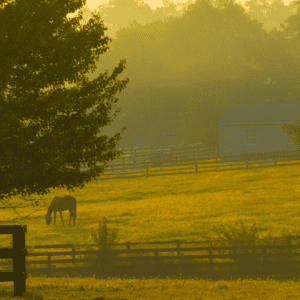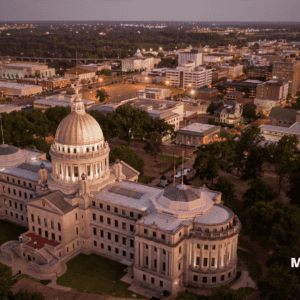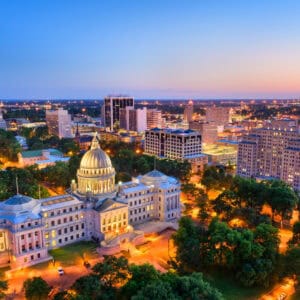The May state jobs report from the Bureau of Labor Statistics follows April’s pattern of steady growth with jobs gains driven by a recovery in the leisure and hospitality sector. The broader pandemic-era picture shows that less restrictive states are dramatically outperforming more restrictive states. Recent months have shown some catch-up the worst-off states such as New York, California, and Michigan—but the long-term analysis shows these states remain at the bottom of the total recovery.
States vary in their impact and recovery from the pandemic recession. As the months roll on, it is increasingly clear that states that were less reliant on tourism outperformed those which were more reliant on tourism. Less urbanized states performed better than more urbanized states. And most importantly for policymakers, states that navigated the pandemic with an eye on both economic opportunity and public health have outperformed those states that enacted broad economic restrictions for extended time periods. During the recovery, it is critical for all states to adjust their policies to foster economic growth.
May jobs performance by state
California once again led states with just over 100,000 jobs recovered in May, with two-thirds of those gains in the leisure and hospitality sector. Florida (+39,900), Texas (+34,400), Pennsylvania (+18,500), and Colorado (17,100) rounded out the top five states for total job gains on the month.
On a percentage basis, the largest gains on the month were from New Mexico (1.1 percent) and Nevada (0.8 percent), followed by Hawaii (0.7 percent), California (0.6 percent), Colorado (0.6 percent), and Florida (0.5 percent).
Recession recovery update through May
Utah (+1.5 percent) and Idaho (+1.3 percent) remain the only states to have recovered the jobs count they had in January 2020, before the pandemic recession. The top 10 states for recovery took a less restrictive approach to economic lockdowns and have enacted policies that favor growth. Those states are South Dakota, Montana, Arkansas, Arizona, Tennessee, Nebraska, Texas, and Mississippi.
Hawaii (-14.8 percent) and New York (-9.5 percent) are still the worst states for jobs recovery, with Nevada (-8.5 percent) and Louisiana (-8.2 percent) following (in comparison to their January 2020 baseline jobs level). The bottom 10 states is rounded out by New Mexico, Michigan, Alaska, Massachusetts, Rhode Island, and New Jersey.
California still has 1.3 million fewer jobs than in January 2020 and is ranked #40 for overall recovery. Florida (-4.9%) ranks #28 for recovery and is performing the best out of the tourism-dependent states.
Leisure and hospitality job recovery lags behind other sectors
The leisure and hospitality sector was hardest hit by the pandemic and remains furthest behind on recovery. States range from having recovered all the leisure and hospitality jobs they lost during the pandemic (Idaho) to those that are still down more than 30 percent of their leisure and hospitality jobs (Hawaii and New York).
The leisure and hospitality jobs sector is a microcosm of a state’s overall economic performance through the pandemic era. States like Hawaii (-30.7 percent), Nevada (-26.1 percent), and Florida (-20.1 percent) are the most reliant on tourism, and thus their downturns and recoveries should be worse, all else being equal. Government orders and consumer health concerns resulted in outsized losses in leisure and hospitality. Furthermore, the federal government has extended bonus unemployment benefits through Labor Day, incentivizing workers to stay at home rather than returning to the job.
How the states can drive economic recovery
States have a variety of policy tools to foster the growth and entrepreneurship that will drive a rapid, lasting recovery. First, states that have not already should opt out of extended federal unemployment bonus benefits. Government benefits that pay better than work is driving the unexpectedly slow jobs recovery. Analyses from The Wall Street Journal and Morgan Stanley show that workers are returning to the job more rapidly in the states that opted out of extended unemployment bonuses.
States should also focus on tax relief and tax cuts. Treasury Department guidance for the American Rescue Plan Act (ARPA) lets states replenish their unemployment trust funds in order to keep business payroll taxes low. States can also reduce taxes to fiscal 2019 levels indexed for inflation. States should incentivize growth by reducing taxes against that restraint.
Regulatory reform is also critical for recovery. Now is the best time to make it easier for workers to get a job and businesses to grow and expand. Occupational licensing should be deregulated and the right to independently contract should be protected. Businesses should be freed from onerous government regulations to experiment with new products and services to satisfy consumers.
State leaders were in the spotlight in 2021, and the same will be true in 2022. Strong, pro-growth policy leadership will help states turn the corner and recover all the jobs they lost during the pandemic.



